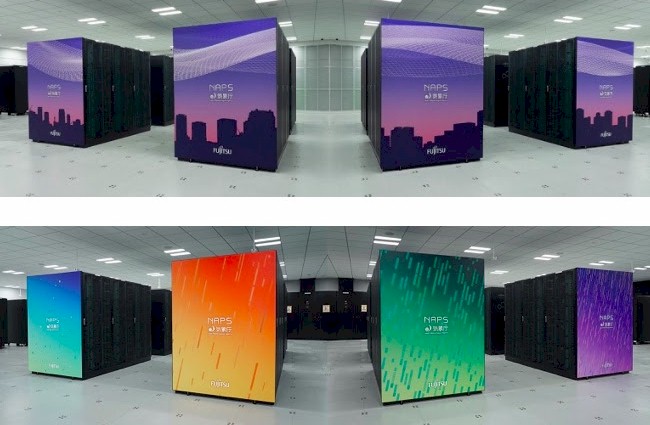You know that climate change is a problem when a supercomputer to do short-term prediction of the formation of linear rainbands and the torrential downpours that they cause is 3.4X as powerful as the machines that do the day-to-day weather forecasting in a country. But this is precisely the situation in Japan, which will be firing up a new supercomputer to do a better job predicting such powerful and damaging storms.
Japan is an island located in the subtropics and has always had to deal with the vicissitudes of cyclones, typhoons, and other kinds of harsh weather. It is also a volcanic island in a tectonic subduction zone and has to worry further about earthquakes and tsunamis. In recent years, as the weather has gotten more intense and linear rainbands have become more common and stronger, the Japan Meteorological Agency has been given a mandate by the Japanese government to study these strong storms and to build a system that does a better job predicting when they will form so people and businesses can build plans for when they hit, thereby reducing loss of life and property.
Linear rainbands are slow-moving or nearly stationary cumulonimbus cloud formations that remain for several hours over the same area, often dumping heavy rains they have picked up, in this case over the Sea of Japan and potentially causing landslides and flooding. The idea is to provide a forecast for such events six to twelve hours ahead of when they will happen.
In July 2020, a linear rainband cutting across southern Japan caused very heavy rainfalls, flooding, and damage along the Kumagawa River in Kumamoto Prefecture.
Figuring out when a cyclone or set of thunderstorms will form into a linear rainband is not trivial, and since June 2022 researchers at the JMA and the RIKEN HPC center in Kobe have been working on a model that can predict the formation and duration of linear rainbands. The work was done on the “Fugaku” supercomputer at RIKEN, which is based on the Fujitsu A64FX Arm HPC processor and commercialized in the Fujitsu PrimeHPC FX1000 product line.
The peak theoretical performance of the linear rainband prediction system, which has not yet been given a nickname as far as we know, will be 31.1 petaflops and is comprised of 24 racks of PrimeHPC FX1000 systems. This PrimeHPC FX1000 system at JMA, which will become operational on March 1, has a 42.3 petabyte parallel file system.
The Fugaku system has well over 400 racks of A64FX server nodes and is rated at 537 petaflops of peak theoretical performance at double precision floating point. Importantly, the A64FX processing nodes, which have a single CPU, are equipped with 32 GB of HBM2 memory that delivers 1 TB/sec of memory bandwidth and that radically improves the performance of HPC simulations – provided you can get your solvers and data to fit into a 32 GB memory footprint.
Interestingly, Fujitsu is hosting the machine on behalf of JMA rather than the latter putting the 24 racks into its own datacenter. The idea is that Fujitsu has a secure facility and redundant power to help keep the machine from being taken out by power outages in the wake of earthquakes or floods.
The JMA’s pair of 9.13 petaflops weather forecasting systems, which were installed nearly five years ago in May 2018, are a pair of Cray XC50 systems based on two-socket “Skylake” Xeon SP nodes with 96 GB of memory each and the system had 2,816 nodes in total, interlinked with the “Aries” XC interconnect developed by Cray. The contract between Hitachi, which was the prime contractor for the Cray sale, was for the pair of XC50 machines to cost $36 million, with another $54 million allocated to run them over five years. That implies the contract will run out in May 2023, and either JMA will extend the contract or buy a new pair of machines to do the normal weather forecasting work. (For a history of supercomputing at JMA, take a look at this story we did when the XC50s were installed in 2018.) JMA started out in 1995 with Hitachi vector processors, moved to clusters of all-CPU IBM Power systems resold by Hitachi in the 2000s and 2010s, and then jumped to X86 iron in 2018.
It will be interesting to see if Fujitsu can win the next JMA system deal and steal it away from Hewlett Packard Enterprise, which bought Cray in May 2019 for $1.3 billion. As far as we know, JMA has not ported its weather codes to GPUs and we think there is a better than even chance it will look hard at HPE Cray XE “Shasta” systems based on “Sapphire Rapids” Xeon SPs with HBM2e memory and the Slingshot Ethernet interconnect as well as the Fujitsu PrimeHPC FX1000 systems based on the A64FX processor and the Tofu D interconnect. We will be watching to see what happens.

